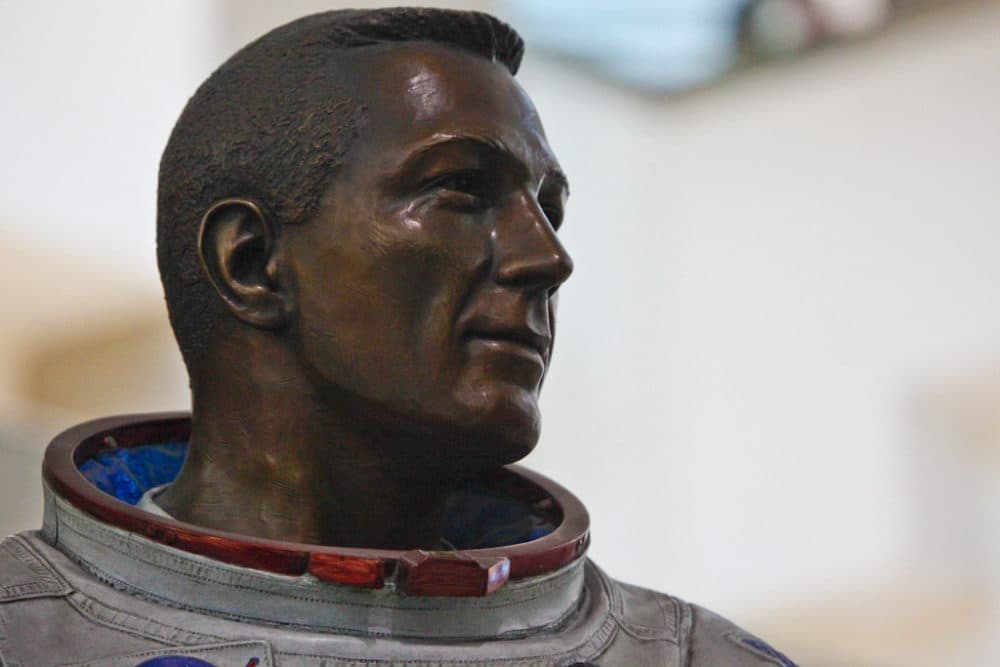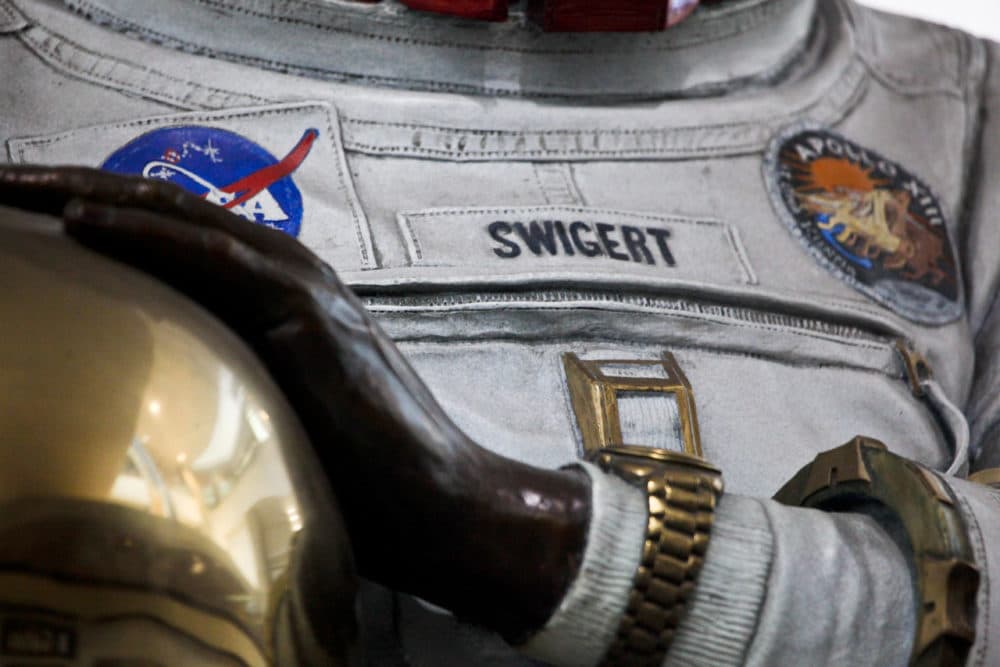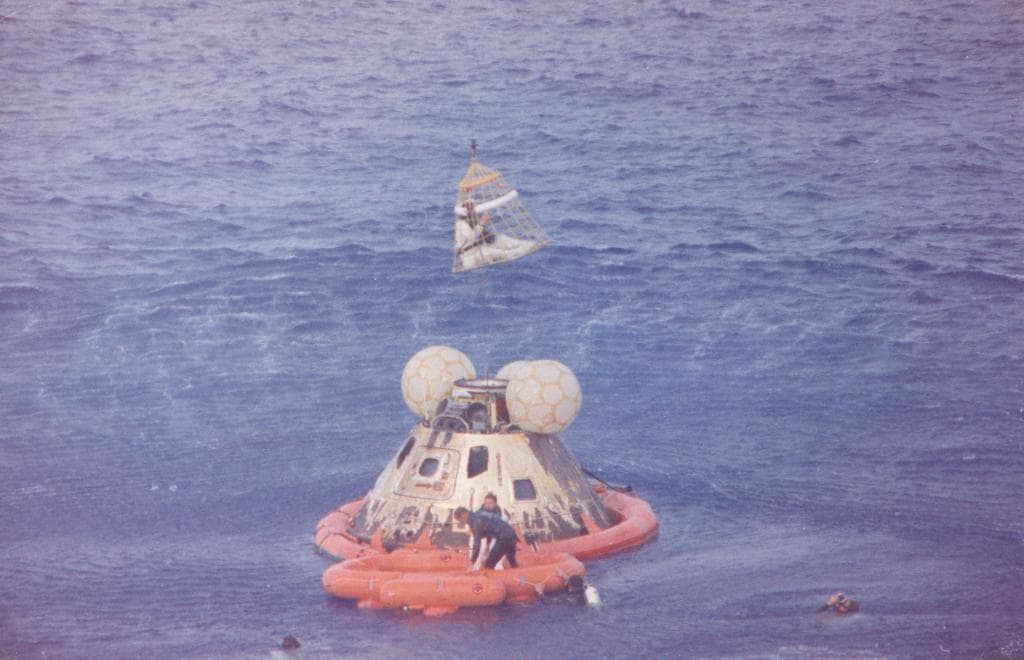
Simply being an astronaut from Denver may not be enough to get a bronze statue of yourself installed at Denver International Airport.
It also helps to utter six of the most memorable words in American history – "Houston, we've had a problem here," – before getting a crippled spacecraft back to earth from beyond the moon, splashing down in the Pacific Ocean exactly 47 years ago today.
And that's not even the half of John L. "Jack" Swigert Jr.'s story, which ended tragically early in 1982.
Swigert was born in Denver in 1931, and he spent his teenage years delivering newspapers and working at a neighborhood grocery to earn his pilot's license at age 16, as The New York Times reported in his obituary.
A graduate of East Denver High School and the University of Colorado, he went on to fly jet fighters in Korea and Japan, even surviving an airstrip crash in Korea. He was rejected twice by NASA before finally winning admission to the astronaut program in 1966.
(FYI, another Colorado astronaut is headed to space this week.)
Swigert wasn't supposed to be aboard the 1970 flight of Apollo 13, which was to be the third touchdown mission to the moon. He was on the backup crew and wasn't called up for the flight until just three days before launch, after another astronaut contracted the German measles.

He was the command module pilot, meaning he was to stay in the moon's orbit while the other two went down. It didn't happen that way, obviously. A spark ignited an oxygen-tank explosion aboard the craft on April 13, 1970, setting off the infamous five-day drama – and an amazing feat of duct-tape engineering.
Seriously: Duct tape saved Apollo 13.
So too did "Swigert’s brawn as a former University of Colorado varsity football player," which "better served him to withstand the cold conditions and endure the small amounts of water that the astronauts had to ration among themselves," as Nancy Atkinson reported, based on an interview with NASA engineer Jerry Woodfill. (Swigert had earned the nickname "Big Swig" at CU, by the way.)
Woodfill also credited Swigert with a "precise" personality and detailed knowledge of the emergency plans for the command module that brought the three men home to safety.

“The truth is, Swigert was gifted with a respect for extreme order and precision, and he was onboard for just that reason,” Woodfill told Atkinson. "Every one of the steps in the rescue checklist had to be ‘in the right order’.”
In the 1995 film adaptation, Swigert would be played by Kevin Bacon. Like the actor, Swigert was something of a heartthrob. One of his sisters said he had ''a girl in every airport from coast to coast," as The New York Times reported in his obituary.
After splashdown, Swigert would never again fly to space. In 1973, he became executive director of the U.S. House Committee on Science and Technology.

He later ran for elected office himself. He lost his first primary, a 1978 attempt at Colorado's Republican nomination for a seat in the U.S. Senate. Four years later, he would win election to the U.S. Congress in the newly creative Sixth District, which is currently held by Rep. Mike Coffman.
Swigert was diagnosed with bone-marrow cancer months before the election. He fought on, winning with nearly two thirds of the vote. He died on Dec. 27, 1982, aged 51 years old, barely a week before his term was to begin. He's buried in Wheat Ridge.
In 1997, a bronze sculpture of Swigert was placed into the U.S. Capitol's statuary collection, a gift from the state of Colorado crafted by George and Mark Lundeen of Loveland. An exact replica went to Denver International Airport and now resides in the tramway concourse of Terminal B.














